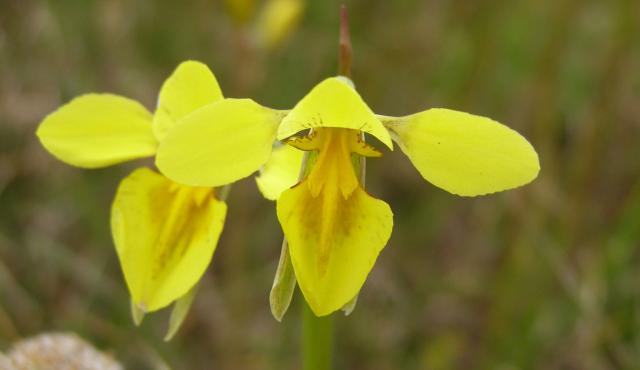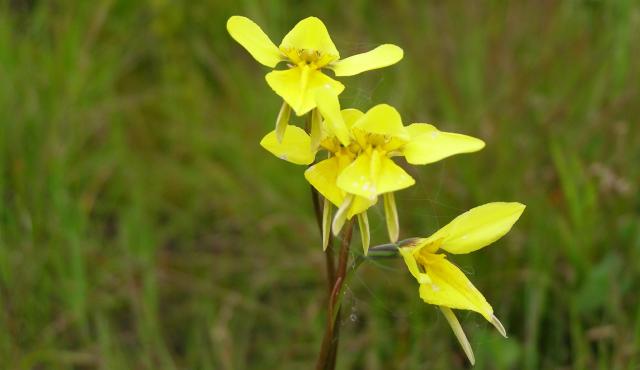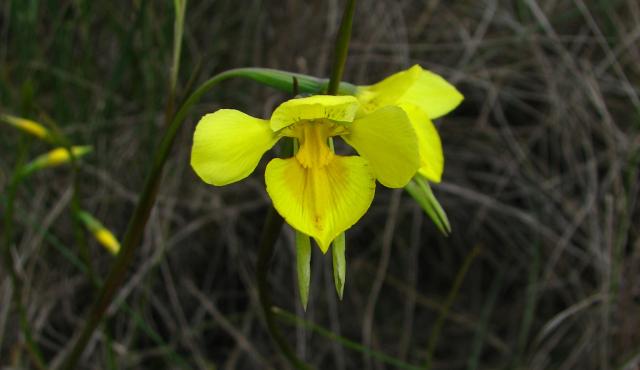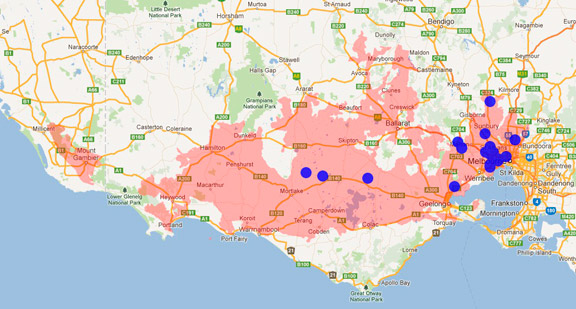A range of teacher professional learning programs will be developed to accompany the Biodiversity of the Western Volcanic Plains online outreach...




Small Golden Moths
Diuris basaltica
A small deciduous terrestrial orchid with 3-9 thin, upright green grass-like leaves growing in a loose tussock. Leaves emerge in late autumn after rain. Flowering occurs in September and October. The leaves shrivel by late spring and if pollination has occurred, the seed capsule will ripen and seeds will disperse. The species survives the dry summer and autumn as a dormant tuber which is replaced annually.
| Details | Description |
| Type | Graminoid |
| Group | Orchid |
| Former Scientific Name | Diuris sp. aff. lanceolata |
| Identifying Characteristics | |
| Distinctive Features | The flowers barely open and have a nodding appearance. |
| Life Form Group | Graminoid |
| Life Form Codes | Medium to Tiny Non-tufted Graminoid (MNG) |
| EVC types | EVC 132_61: Heavier-soils Plains Grassland |
| Native Status | Native to Australia |
| Taxonomy | |
| Phylum | Charophyta |
| Class | Equisetopsida |
| Order | Asparagales |
| Family | Orchidaceae |
| Genus | Diuris |
| Species | basaltica |

Distribution maps indicate current and historic locations where species have been sighted.
Source: Atlas of Living Australia
| Endangered Status | |
| DEPI Advisory List | Vulnerable |
| FFG Act | Listed as threatened |
| EPBC Act | Endangered |
The conservation status of species is listed within Victoria and Australia.
The Department of Environment and Primary Industry (DEPI) Advisory List consists of non-statutory advisory lists of rare or threatened flora and fauna within Victoria.
The Flora and Fauna Guarantee Act 1988 (FFG Act) lists threatened species in Victoria. Under the Act, an Action Statement is produced for each listed species.
The Environment Protection and Biodiversity Conservation Act 1999 (EPBC Act) is the Australian Government’s key piece of environmental legislation, listing nationally threatened native species and ecological communities.



